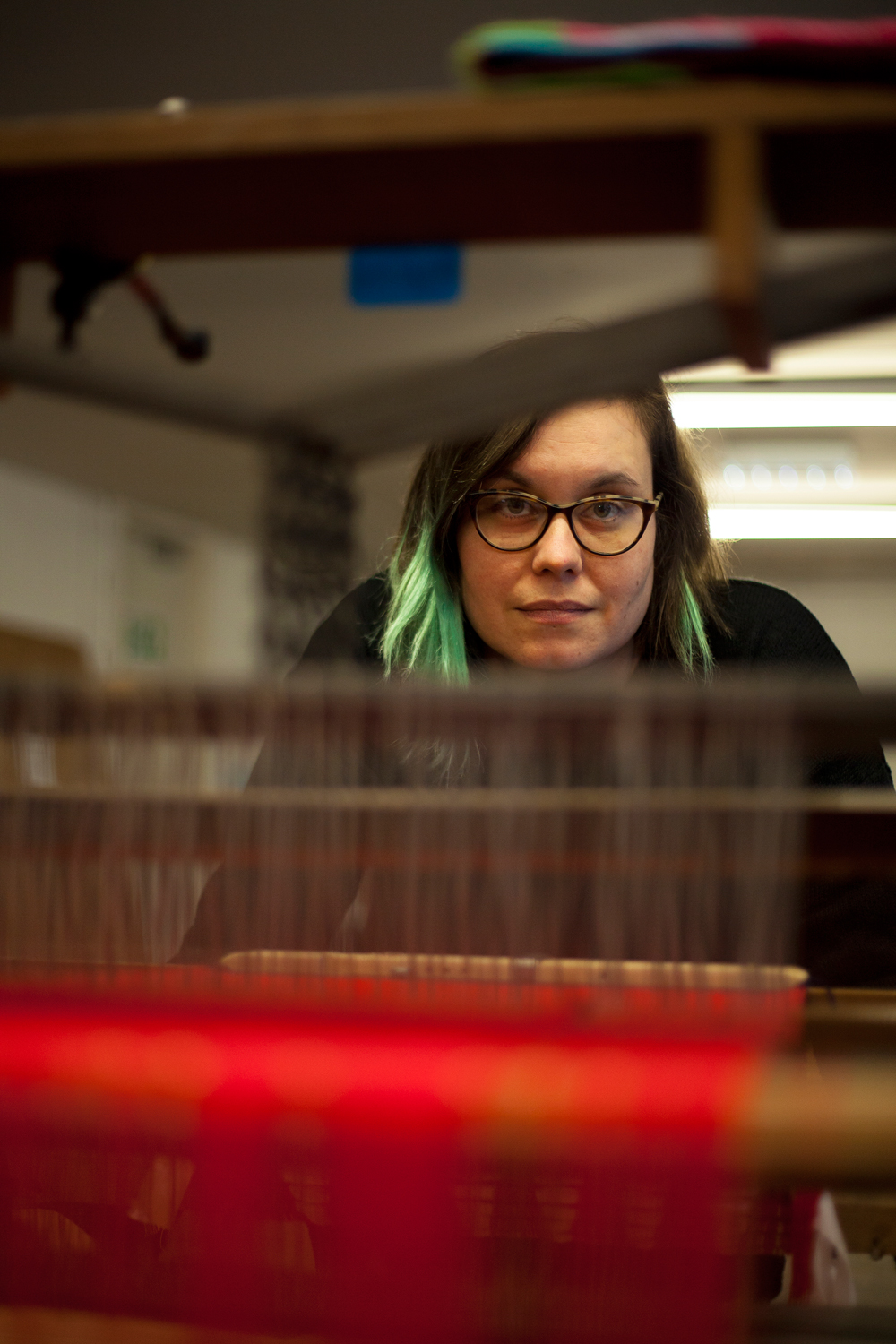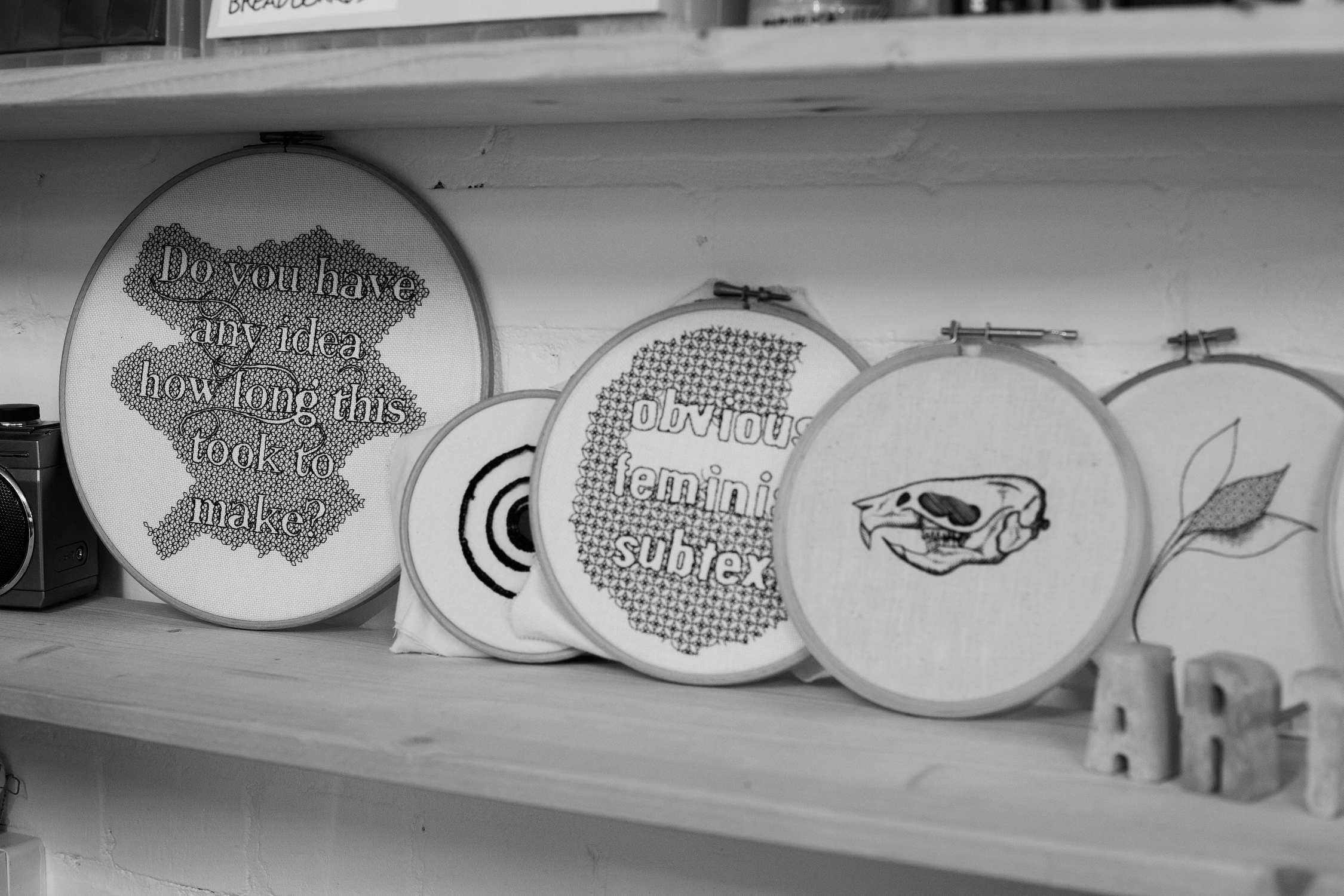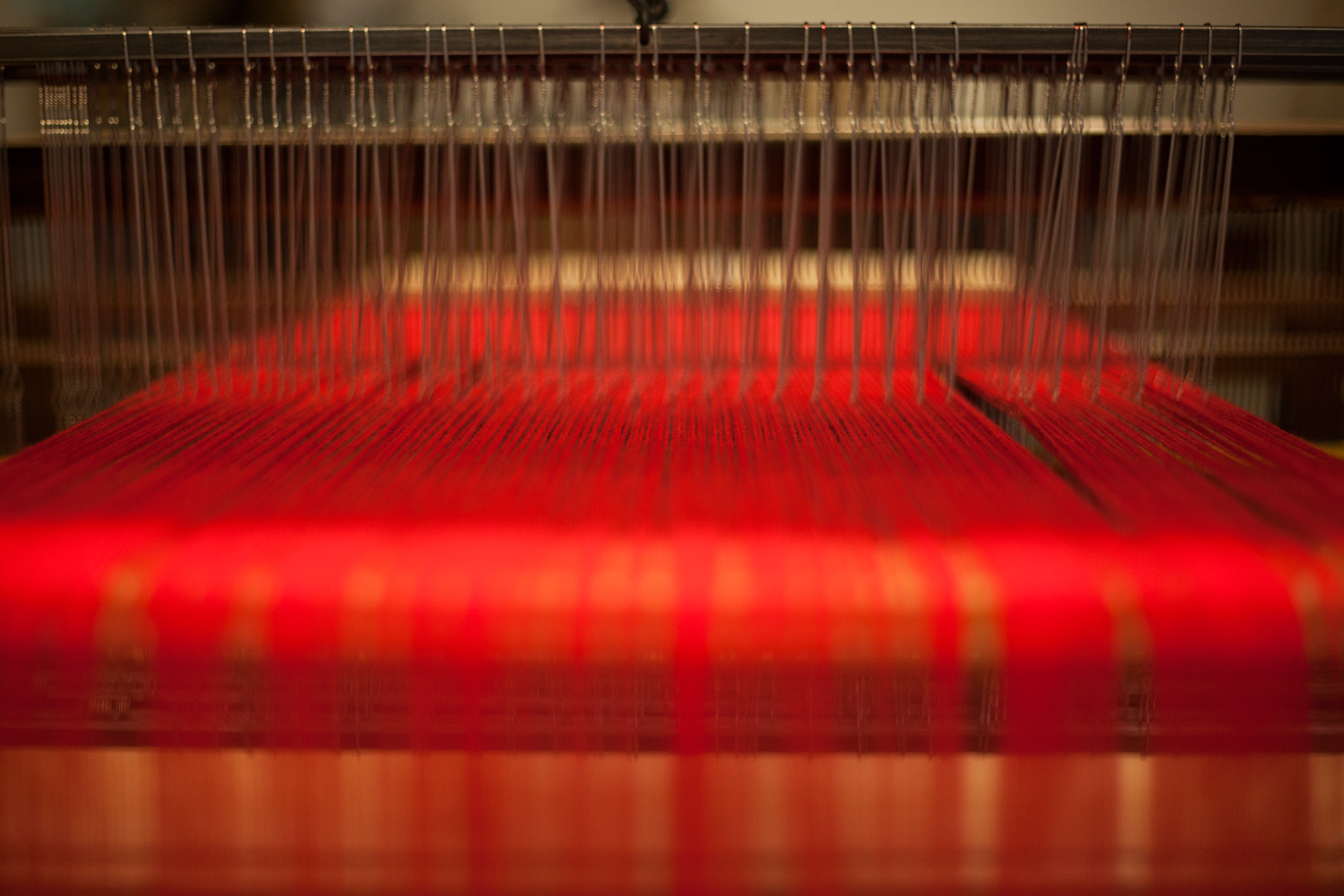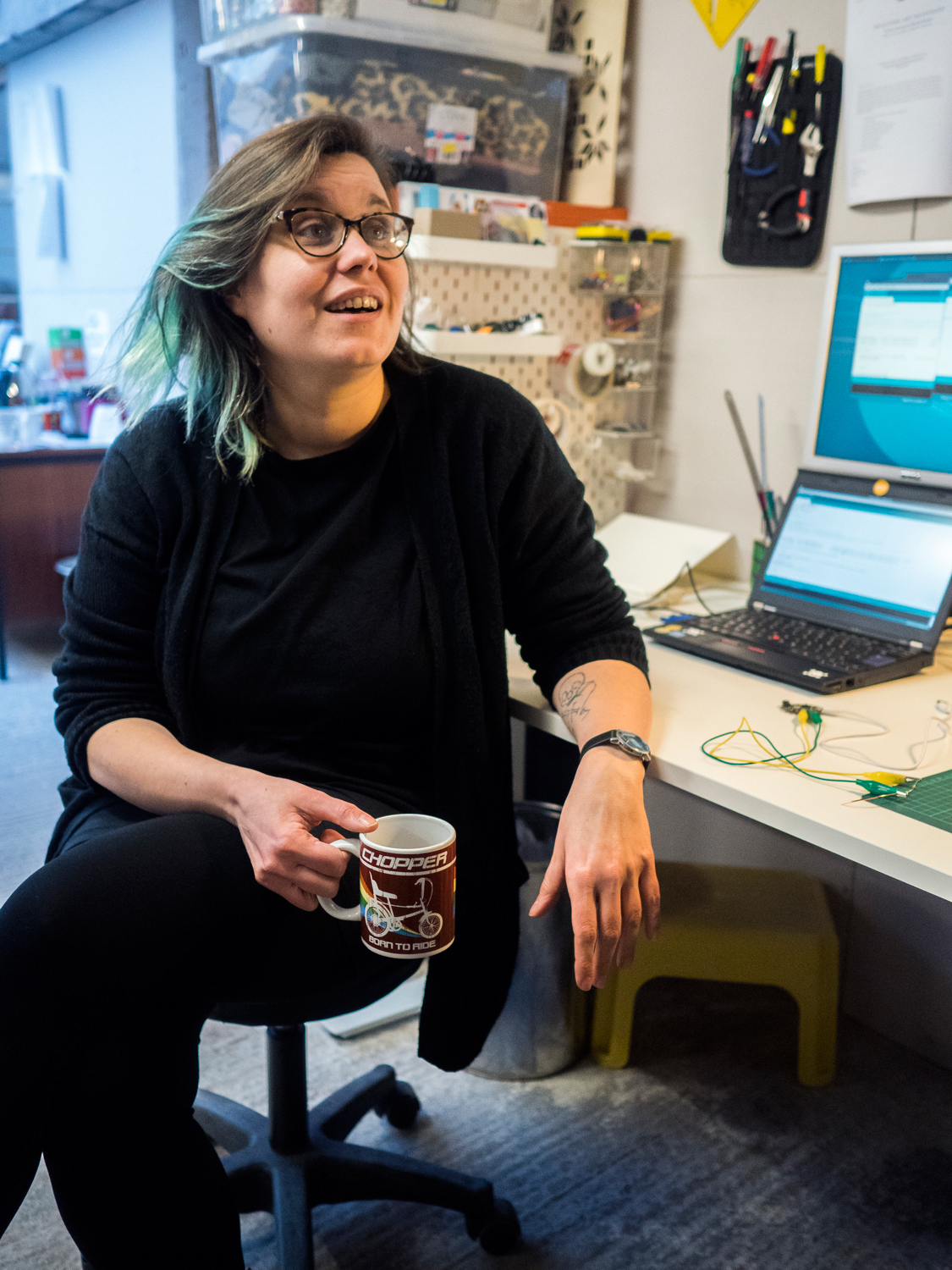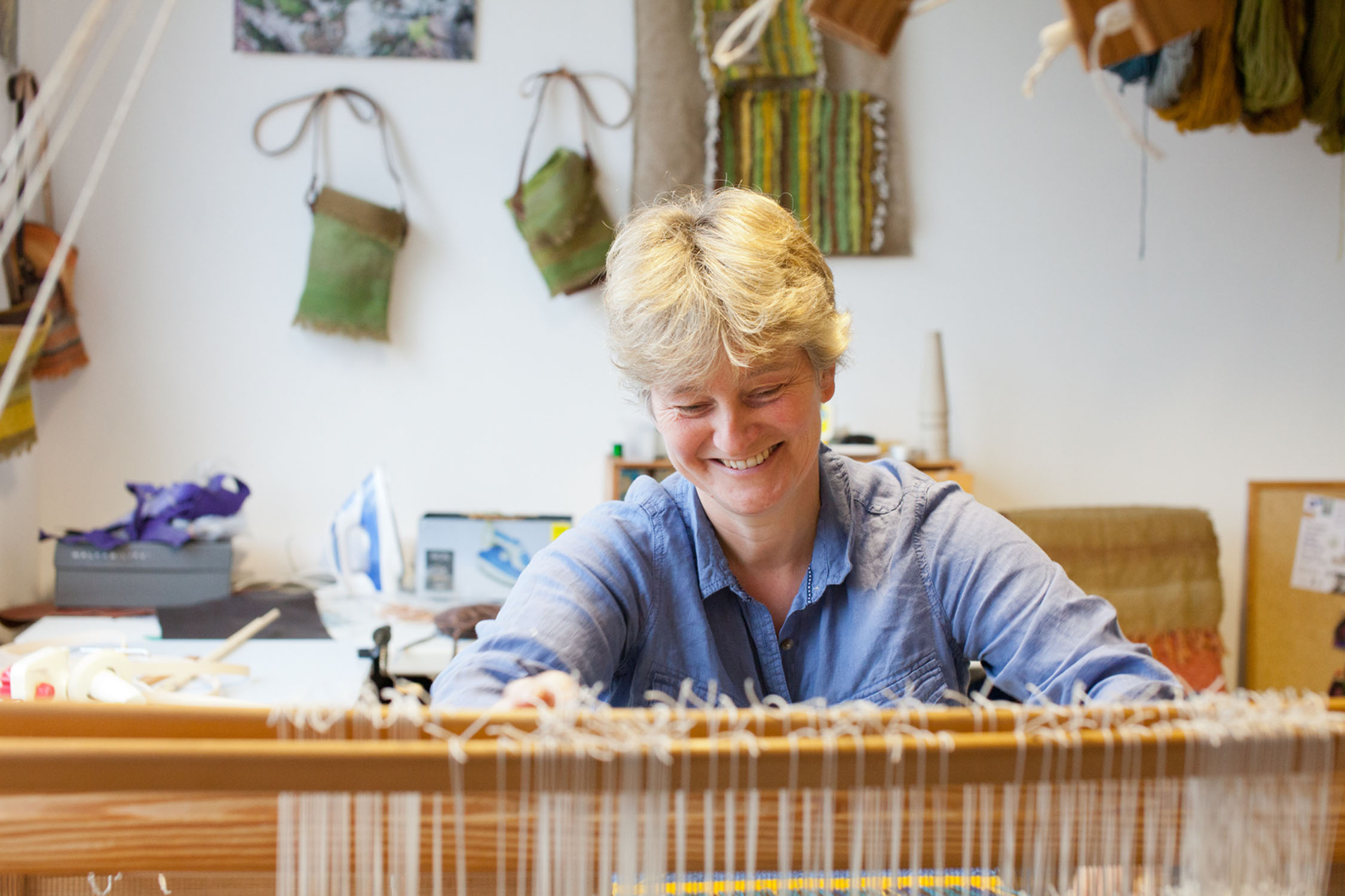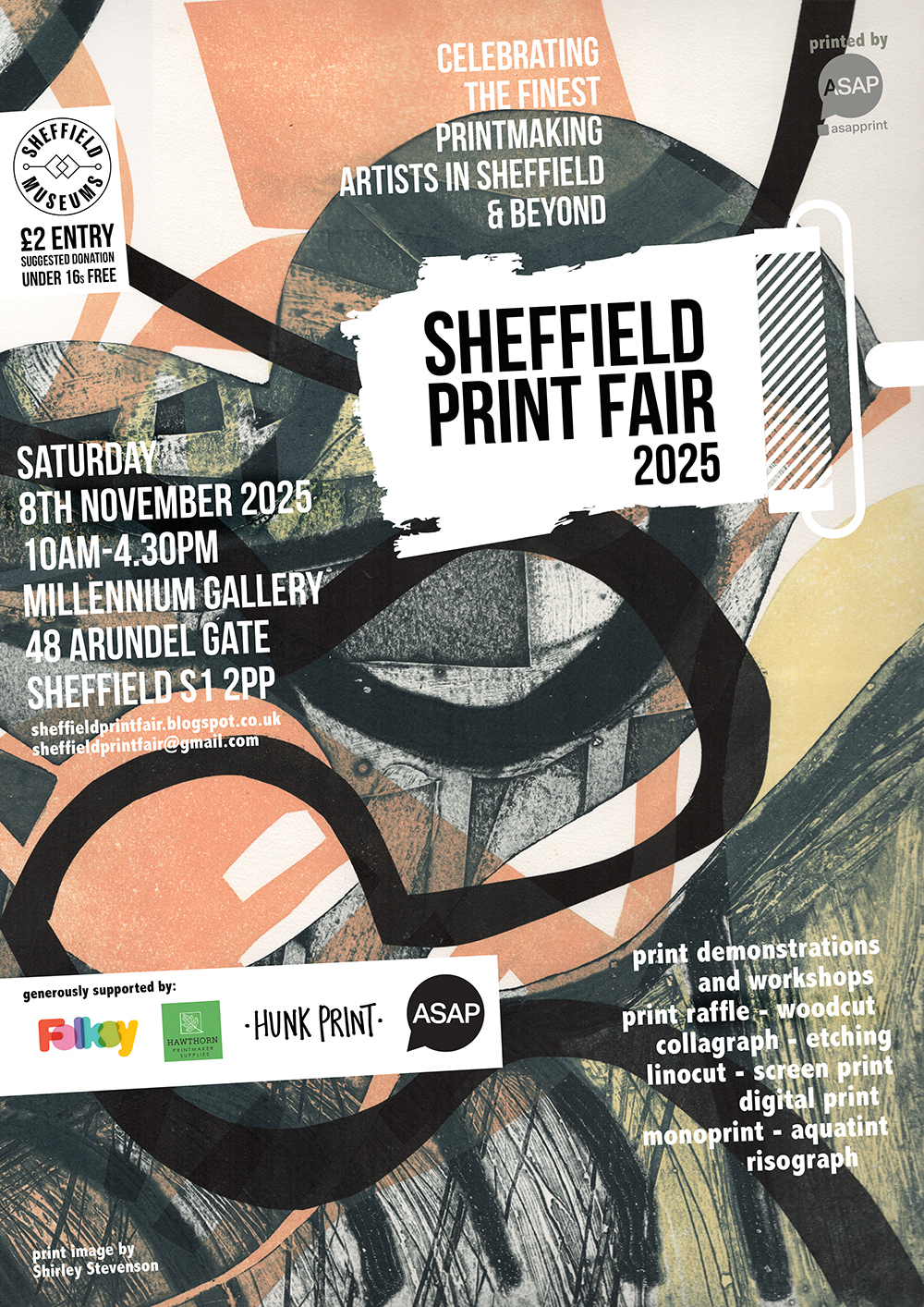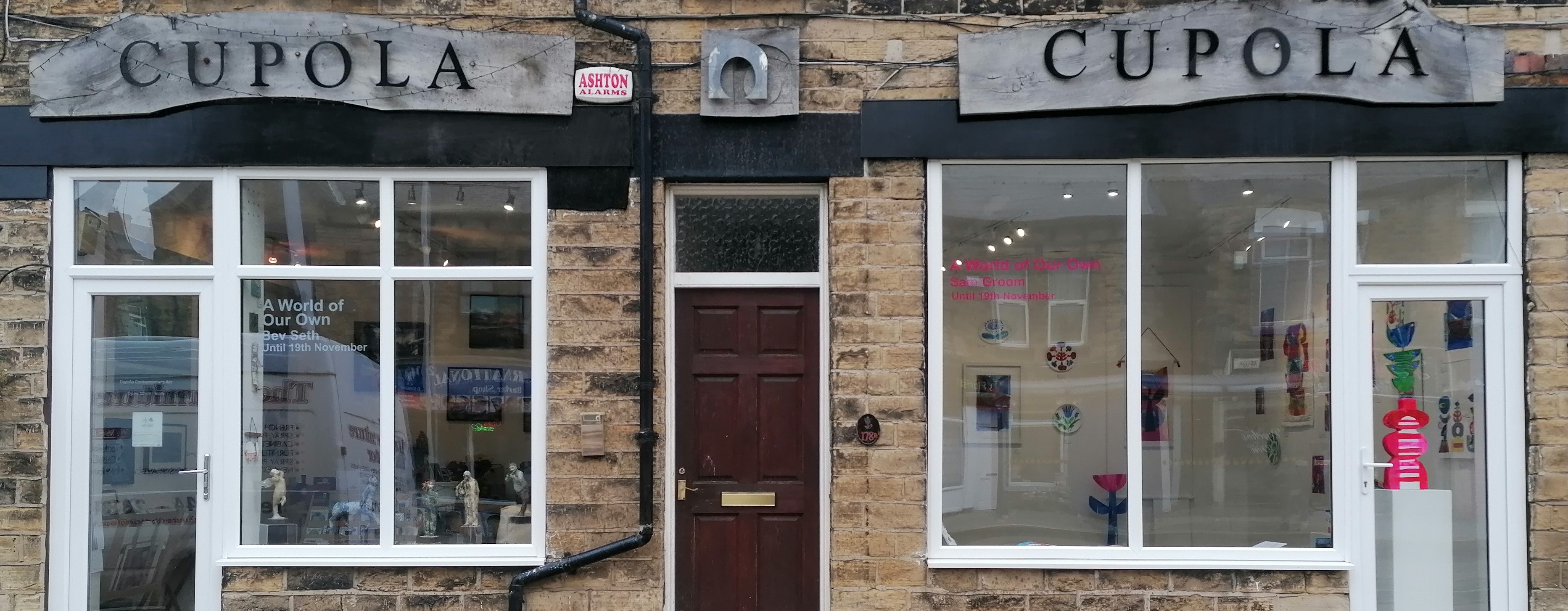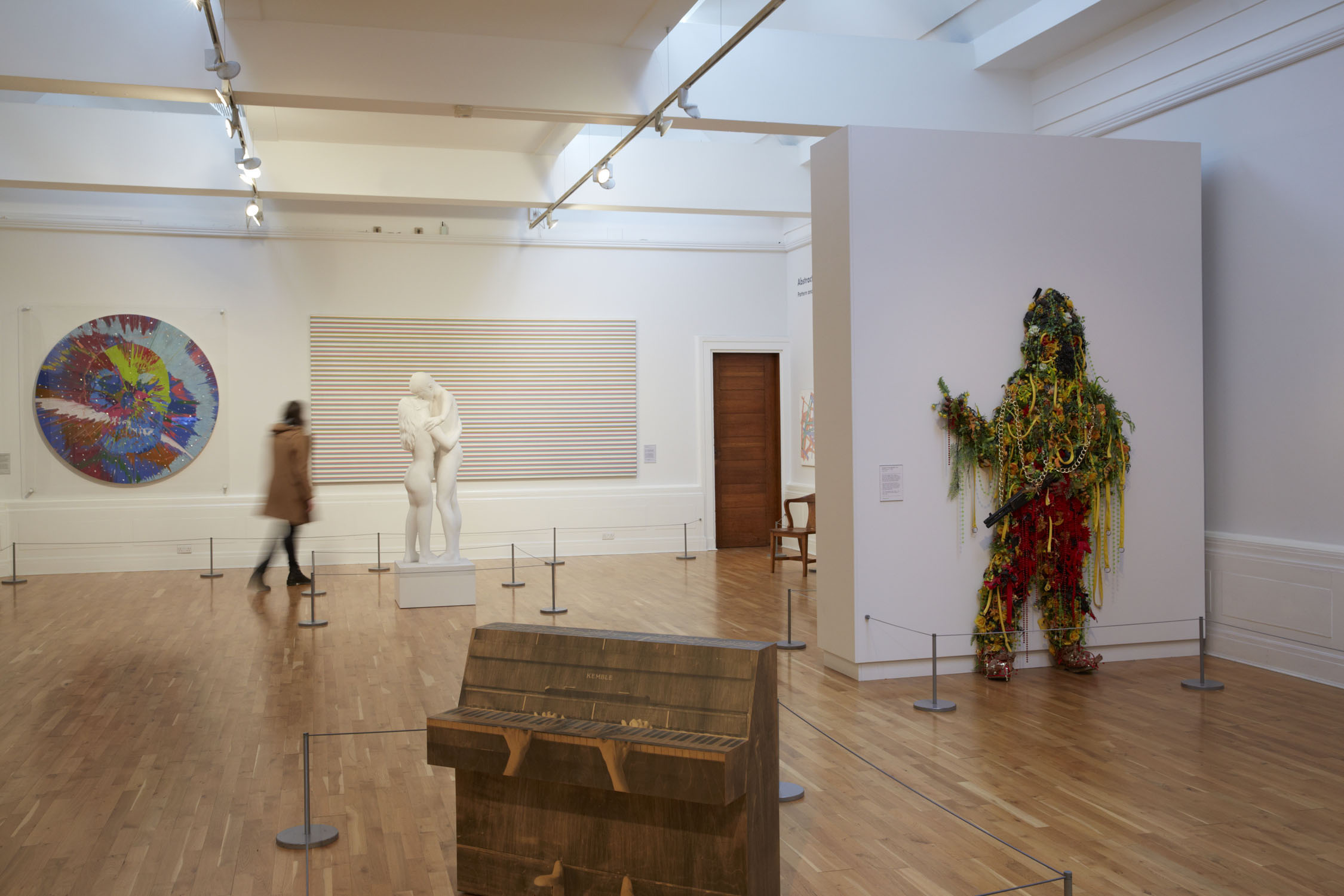Toni Buckby is an artist who brings the traditional and the progressive into dialogue to create something entirely new. Her work sits in a very unique place, investigating traditional techniques of making such as embroidery and weaving, whilst being positioned firmly in the realm of computer art, exploring projection mapping, digital fabrics and computer weaving processes. Toni's currently entering a seminal point in her practice and career, undergoing large-scale commissions as well as an intensive PhD with Sheffield Hallam University in partnership with the V&A, looking into using progressive computer mapping processes to present and open up items in the museum's collection.
As well as exploring new ways of making, Toni's work is deeply rooted in collective production. Often working with community groups and collaborators, she opens up the conversation around artistic autonomy by allowing everyone to contribute to the development of an artwork – which also often results in her work refusing to be fully concluded after their installation. Using and contributing to open source archives, Buckby’s work is accessible in a multitude of ways, whilst retaining a progressive and critical edge. Here is an artist whose approach to art production often goes against the perception of the creative as the individual, solitary author of an artwork.
How would you describe your work?
My work spans the seemingly diverse but oddly related fields of textiles, electronics and computer art. I specialise in hand embroidery, with a particular focus on the 16th century technique of blackwork, and the creation of experimental interactive electronics. I also spin, weave, draw, code, laser cut, 3D print. I spend most of my time attempting to get impractical ideas to function! I love to collaborate, so I often work with other artists on projects, as well as running public workshops and making a lot of my work available online for others to use.
How do you choose the themes you work with?
I’m fascinated by processes of textile making, whether that’s the structure of weaving, the tactile technique of spinning fibre or the multitude of stitches and styles of embroidery. I’ve been obsessed with blackwork since I saw it in an old book of embroidery techniques – I love the graphic quality of the stitches and the geometry of the patterns. I’m very lucky to have been given the opportunity to study the historical blackwork embroideries through my PhD research at the V&A; being able to handle and examine such beautiful old objects is a real privilege!
The other aspect of my work is electronics and digital technology. I see a parallel between the making of textiles and the making of digital work – both are logical processes of building complex structures through simple components. There is certainly a conceptual similarity, but I also create hybrid works, like embedding electronics into fabric or creating computer simulations based on textile techniques.I’m quite playful in my approach to my work – I take great delight in mashing (often disparate) materials and ideas together to see what happens, it’s why I like to collaborate so much. There’s a joy in the attempt to get something working, or not! I even find failures or unexpected results interesting.
What's your workspace like?
I share a studio with the other Hallam art PhD researchers at S1. It’s great to be part of a community of artist-researchers, there’s always an interesting conversation going on, plus we consume a lot of tea and cake! My space has an embroidery frame, loom and a drawing board set up, plus a couple of big desk/workbenches which I do pretty much everything else on. I experiment with a lot of different techniques and materials so I have to keep things fairly tidy otherwise it would be impossible to work. I’ve also been involved with Access Space for a number of years as an arts administrator and tutor, so I have access to a full workshop and rapid prototyping tools (laser cutter, large format printer, CNC, 3D printer, etc). I'm unbelievably fortunate in that regard, although I sometimes worry it makes me a little lazy in my problem solving – if I don't have the EXACTLY the thing I need I can usually make it really quickly!



